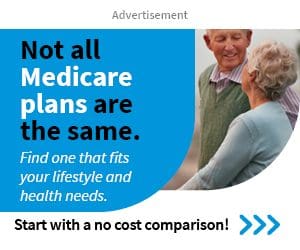Part D Eligibility
Introduction: Navigating Part D Eligibility for Prescription Drug Coverage
Medicare Part D offers valuable prescription drug coverage to beneficiaries, helping them afford essential medications to manage their health conditions. Understanding Part D eligibility criteria is crucial for beneficiaries to access this coverage and ensure their medication needs are met. In this guide, we’ll explore the eligibility requirements for Medicare Part D, enrollment periods, and considerations for selecting a Part D plan that aligns with your prescription drug needs and budget.
Medicare Part D prescription drug coverage is available to individuals who meet the following eligibility criteria:
- Enrollment in Medicare: To be eligible for Part D, individuals must be enrolled in Medicare Part A and/or Part B. Most beneficiaries are automatically enrolled in Part A when they turn 65 or become eligible due to a disability, but they must actively enroll in Part B to access Part D coverage.
- Residence in the Service Area: Beneficiaries must reside in the service area of a Medicare Part D plan to enroll in prescription drug coverage. Part D plans are offered by private insurance companies and may have specific service areas where they are available.
- Enrollment during Initial Enrollment Period (IEP) or Special Enrollment Period (SEP): Eligible individuals can enroll in a Part D plan during their Initial Enrollment Period (IEP), which typically begins three months before their 65th birthday and ends three months after their birthday month. Beneficiaries may also qualify for a Special Enrollment Period (SEP) if they experience certain life events, such as losing other prescription drug coverage or moving to a new service area.
Enrollment Periods for Medicare Part D
Medicare Part D has specific enrollment periods during which beneficiaries can sign up for or make changes to their prescription drug coverage. These enrollment periods include:
- Initial Enrollment Period (IEP): The Initial Enrollment Period for Medicare Part D begins three months before an individual’s 65th birthday and ends three months after their birthday month. During this period, beneficiaries can enroll in a Part D plan for the first time without facing late enrollment penalties.
- Annual Enrollment Period (AEP): The Annual Enrollment Period for Medicare Part D occurs each year from October 15th to December 7th. During this period, beneficiaries can enroll in a new Part D plan, switch between Part D plans, or disenroll from Part D coverage.
- Special Enrollment Period (SEP): Beneficiaries may qualify for a Special Enrollment Period if they experience certain qualifying events, such as losing other prescription drug coverage, moving to a new service area, or qualifying for Extra Help with prescription drug costs. The SEP allows individuals to enroll in a Part D plan or make changes to their coverage outside of the Annual Enrollment Period.
Understanding these enrollment periods helps beneficiaries make timely decisions about their prescription drug coverage and avoid late enrollment penalties.
Considerations for Selecting a Part D Plan
When selecting a Medicare Part D plan, beneficiaries should consider the following factors:
- Formulary Coverage: Review the plan’s formulary, or list of covered medications, to ensure your prescription drugs are included in the plan’s coverage. Consider whether your medications are on the plan’s formulary and whether any restrictions or prior authorization requirements apply.
- Cost-sharing Structure: Evaluate the plan’s cost-sharing structure, including premiums, deductibles, copayments, and coinsurance. Compare the total out-of-pocket costs associated with each plan to determine which plan offers the most affordable coverage for your medication needs.
- Pharmacy Network: Confirm that your preferred pharmacies participate in the plan’s network and that you have convenient access to pharmacies in your area. Consider whether mail-order pharmacy options are available and whether they offer cost-saving benefits for your prescription medications.
- Star Ratings and Plan Performance: Review the plan’s star ratings and performance metrics to assess its quality and customer satisfaction ratings. Choose a plan with high ratings and positive reviews to ensure reliable coverage and customer service.
Extra Help for Prescription Drug Costs
Beneficiaries with limited incomes and resources may qualify for Extra Help, also known as the Low-Income Subsidy (LIS) program, to assist with prescription drug costs under Medicare Part D. Extra Help provides financial assistance for premiums, deductibles, copayments, and coinsurance associated with Part D coverage. To qualify for Extra Help, individuals must meet certain income and resource limits established by the Social Security Administration (SSA).
Managing Part D Costs and Coverage
To manage Medicare Part D costs effectively, beneficiaries can consider the following strategies:
- Review Your Medication Needs Annually: Review your prescription drug needs annually and compare Part D plan options during the Annual Enrollment Period. Ensure that your medications are covered at an affordable cost under your chosen plan.
- Explore Generic and Therapeutic Alternatives: Talk to your healthcare provider about generic or therapeutic alternatives for your prescription medications that may be more cost-effective. Generic drugs are typically less expensive than brand-name drugs and offer similar therapeutic benefits.
- Consider Mail-Order Pharmacy Services: Explore mail-order pharmacy services offered by Part D plans, which may provide cost-saving benefits for maintenance medications and offer convenient home delivery options.
- Utilize Medication Therapy Management (MTM) Programs: Take advantage of Medication Therapy Management (MTM) programs offered by some Part D plans, which provide personalized medication reviews and recommendations to optimize your medication therapy and reduce costs.
By implementing these strategies, beneficiaries can effectively manage their Part D costs and ensure access to affordable prescription drug coverage under Medicare.
Conclusion: Accessing Prescription Drug Coverage with Medicare Part D
Medicare Part D offers valuable prescription drug coverage to beneficiaries, helping them afford essential medications to manage their health conditions. By understanding Part D eligibility criteria, enrollment periods, and considerations for selecting a Part D plan, beneficiaries can access the prescription drug coverage they need while minimizing their out-of-pocket expenses.
Empower yourself with knowledge about Part D, explore your coverage options, and enroll in a plan that meets your medication needs and budget. With the right Part D plan in place, you can enjoy peace of mind knowing that your prescription drug costs are covered and focus on maintaining your health and well-being.
Ready to explore your options for prescription drug coverage under Medicare Part D? Download our free eBook. Connect with our licensed insurance agents today to compare Part D plans and find the coverage that meets your medication needs and financial preferences. Your health and well-being are our top priorities—let us help you navigate Part D eligibility and access the prescription drug coverage you deserve.



